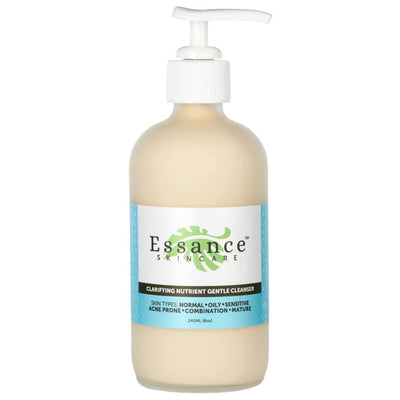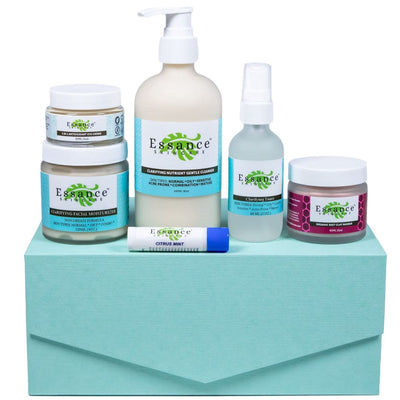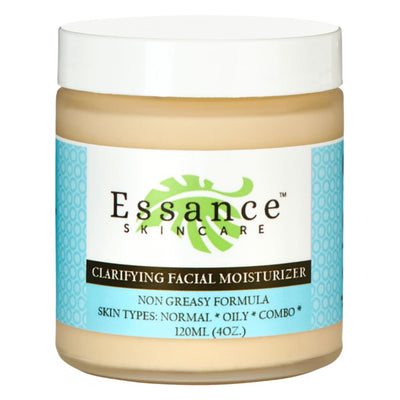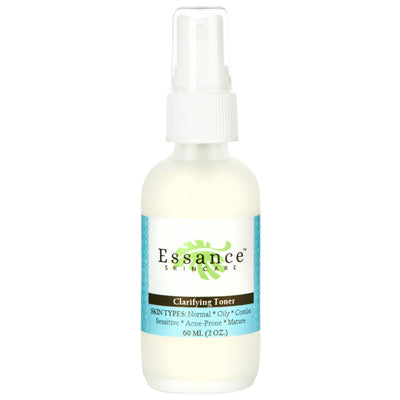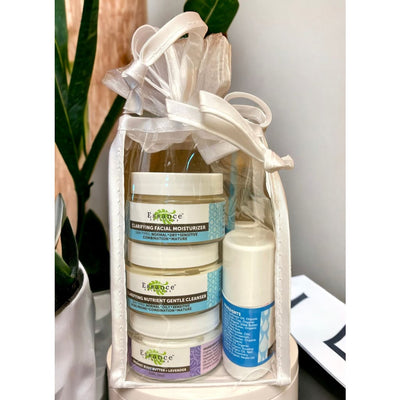You might find it challenging to keep your face clear, especially if you have acne-prone skin. Acne often appears during your teenage years due to changing hormones, busy schedules, and inconsistent face care habits. You may notice pimples or blackheads, most commonly on your forehead, nose, and chin. These breakouts can be discouraging, especially when you have social events, sports activities, or even online classes. However, a proper teenager skincare routine can make a real difference.
Your teenage years are also a time of self-expression and personal growth. You want to face each day confidently and comfortably, which is why following a skin routine for teens matters. No matter how oily or dry your face feels, focusing on suitable skincare for teenage skin can help you address current breakouts and reduce the likelihood of issues later.
Read on to learn about the best skincare for teenagers and how to choose the best skincare products for teenagers effectively.
Step 1: Identify Your Skin Type
Determining your skin type forms the cornerstone of a teenage skincare routine. Before you run out to buy products, pause and examine your face in the mirror at different times of day. You can figure out which category you fit into by checking for oiliness, dryness, or sensitivity.
-
Oily Skin: If your skin feels greasy soon after you cleanse, you likely have oily skin. You might notice a lot of blackheads or enlarged pores in your T-zone (forehead, nose, and chin).
-
Dry Skin: Does your face feel tight or flaky? Dry patches and a rough texture can be signs of this type. You need extra moisture to maintain a smooth, calm feel.
-
Combination Skin: This type is tricky because you experience both dryness and oiliness. Usually, your T-zone appears shiny while your cheeks remain normal or dry.
- Sensitive Skin: If your face reacts quickly to new products or environmental changes, you might have sensitive skin. Redness, itching, or a burning sensation could indicate that you need gentle, natural skincare for teenage skin to prevent irritation.
Once you figure out your type, you can start building a personal teen skincare routine. It's helpful to keep a small journal or note on your phone about which products cause redness or extra oil. That way, you know to avoid them in the future.
Step 2: Find the Best Facial Cleanser for Your Skin Type
Cleansing is the foundation of any routine aimed at skincare for teenage skin. Washing your face removes dirt, makeup, and excess oil, making it less likely for pores to clog and form pimples. By choosing the best cleanser for teenage acne, you create a strong base for the rest of your daily steps.
Types of Facial Cleansers
-
Gel Cleansers: These are water-based and lightly textured, perfect for oily or combination skin. Gel cleansers help clear impurities without stripping your face of moisture.
-
Cream Cleansers: Often described as rich or milky, these cater to dry or sensitive skin. They offer hydration while washing away sweat and oil.
- Foam Cleansers: These products lather up quickly. Foam cleansers are often marketed to teens with oily skin, but some can be drying, so pay attention to how your face feels afterward.
Tips for Selecting a Cleanser
-
Check the label for phrases like “non-comedogenic” or “oil-free” if you have oily skin.
-
Make sure the cleanser does not leave you feeling itchy or overly tight afterward.
- Choose a product that is easy to rinse off, especially if you have a busy morning or need a quick night routine.
Recommended Product: Try the Essance Clarifying Cleanser for Acne Prone & Sensitive Skin if you want a mild yet effective option. It blends gentle ingredients to remove grime while nourishing your skin. This formula is especially appealing if you aim for natural skincare for teenage skin and want to keep breakouts in check.
Step 3: Understand Toner and Its Role
You might wonder, “What does toner actually do, and why do I need it?” A good toner preps your skin for additional steps in your teenager skincare plan. It helps balance pH levels, reduces the appearance of pores, and freshens your complexion. If you've always skipped toner because you didn't know what it was for, here's what you need to know:
-
Balanced pH: Cleansers can sometimes disrupt your skin's natural levels. A toner helps restore balance, making it easier for moisturizers or treatments to work well.
-
Extra Cleansing: A toner can sweep away any leftover traces of dirt or cleanser, particularly around your hairline or jawline.
- Refreshed Feel: Many toners have soothing ingredients like aloe or herbal extracts, giving your face a calming boost before the next step.
How to Apply Toner
-
After cleansing, pour a small amount of toner onto a cotton pad or reusable cotton round.
-
Gently wipe your face in upward strokes, focusing on areas you might have missed during cleansing.
- Allow it to dry for a few seconds before moving on to moisturizer or acne treatments.
Recommended Product: Check out Essance Clarifying Toner For Acne Prone & Sensitive Skin to keep your complexion feeling smooth and refreshed. It's designed to help soothe and refresh your face without harsh chemicals. This product is a perfect addition to the skincare routine for teenage girls or boys and can help you feel more confident about tackling oily zones.
Step 4: Select an Appropriate Moisturizer
Some teens skip moisturizers because they are thought to cause oily skin or clog pores. However, even oily or combination types need a daily moisturizer, especially if you're using acne treatments that can dry your face. A properly chosen moisturizer helps your complexion remain calm and less likely to produce more oil in response to dryness.
What to Look For
-
Lightweight Formulas: Oil-free or non-comedogenic products often suit acne-prone teens.
-
Hydrating Ingredients: Hyaluronic acid and ceramides add moisture without making your face greasy.
- Sensitive Skin Options: If you have redness or irritation, look for a hypoallergenic or fragrance-free product.
Recommended Product: Consider Essance Clarifying Moisturizer for Acne Prone & Sensitive Skin for a gentle daily product. The lightweight consistency means it works well under makeup or sunscreen, offering hydration without clogging pores. If you crave a routine that leans toward natural skincare for teenage skin, this moisturizer can be a beneficial step.
Step 5: Use Targeted Treatments for Persistent Blemishes
When a pimple appears, it can feel like it happens at the worst possible time—right before picture day or a big event. You can manage these flare-ups by adding spot treatments to your skin routine. Spot treatments usually have ingredients like salicylic acid or benzoyl peroxide, which help dry out the pimple and reduce bacteria.
How to Apply Spot Treatments
-
Cleanse and tone your face, then pat it dry.
-
Dab a thin layer of spot treatment on the blemish. Don't spread it all over your face unless the product directions specify.
- Wait a minute or two before adding moisturizer. This allows the treatment to absorb properly.
Remember: Overusing spot treatments can irritate your skin, so follow the product instructions carefully. Additionally, if you have multiple breakouts, you might consider an all-over acne treatment or a specialized toner.
Step 6: Sunscreen and Its Importance
Sun protection might not feel like the most exciting part of your day, but it's essential for teenage skincare. Even brief exposure to UV rays can contribute to long-term damage. When you have acne, sunscreen can also protect skin that may be more sensitive due to certain treatments.
-
Pick a Non-Comedogenic Sunscreen: Make sure it won't clog your pores.
-
Apply Daily: Even on cloudy days or when you're spending time indoors, UVA rays can still affect your face.
- Reapply: If you're out in the sun for longer periods, reapply sunscreen every two hours or after swimming or sweating.
You might find a combined moisturizer and sunscreen product that saves time. Just confirm that it provides enough coverage (SPF 30 or higher).
Step 7: Tweaks to Elevate Your Routine
Once you have the basics of a teen skincare routine in place—cleanser, toner, moisturizer, and spot treatment—you can consider a few extras to keep your complexion looking fresh.
-
Exfoliate Wisely: Gentle exfoliation once or twice a week can help slough off dead cells. Over-exfoliating, however, might lead to redness or inflammation, so be cautious.
-
Face Masks: Clay masks can soak up excess oil, while sheet masks may calm irritated skin. Pick one that caters to your skin type and use it once a week for a relaxing mini-spa moment.
- Healthy Lifestyle Choices: Drinking water, exercising regularly, and getting enough sleep can support a clearer face. Stress can encourage breakouts, so find ways to relax—listen to music, go for a walk, or pursue a hobby you love.
Step 8: Shopping Tips for Parents and Teens
Many brands promise instant acne relief. The real key is choosing the best products for teenage acne that address your specific needs. If you have questions, it might help to bring a parent along when shopping. Read labels together to ensure you're not buying anything that contains irritating chemicals, heavy fragrances, or pore-clogging oils.
You can explore Essance Skincare products that are cruelty-free and avoid harmful ingredients. As you test different formulas, keep track of what works and what doesn't. This way, you gradually create your personal teenage skincare routine that caters to your concerns.
Step 9: Encourage Consistency and Patience
Teen life can be hectic—early morning classes, extracurriculars, part-time jobs, or hanging out with friends. While it's tempting to neglect your skincare steps when you're tired, consistency is crucial for results. Give each product some time to show its effects. You may not see changes overnight, but steady practice improves your complexion over weeks and months.
If you experiment with multiple products at once, you might not know which one caused a good or bad reaction. Introduce new items gradually. For example, if you want to try a new toner, keep your usual cleanser and moisturizer the same. This method allows you to isolate any product issues quickly.
Take Control of Your Teen Skincare Journey
Life is busy, but your face deserves regular care. A well-chosen skincare routine can help you feel comfortable and confident whether you're heading to school, practice, or a weekend party. To move forward:
-
Identify Your Needs: Oily, dry, combination or sensitive skin requires a specific approach.
-
Start with Basics: The core elements are cleanser, toner, moisturizer, and sunscreen.
-
Adjust as Needed: If you have persistent blemishes, add spot treatments or products with acne-fighting ingredients.
- Stay Consistent: Use products daily, track your progress, and communicate with your parents if you notice changes.
Take Charge Now
Ready to tackle breakouts and put your best face forward? Explore the best skincare products for teenagers from Essance Skincare. Focus on gentle formulas and read labels carefully. After all, a clear, fresh complexion supports your inner glow and boosts your self-assurance every day.
FAQs
1. What causes acne in teenagers?
Hormonal changes during puberty often lead to higher oil production. When this excess oil combines with dead skin cells and bacteria, your pores can clog, resulting in pimples and blackheads. Stress, poor diet, and certain hair or makeup products can also contribute.
2. How often should a teenager with acne wash their face?
Aim to cleanse your face twice a day—once in the morning and once in the evening. Overwashing can irritate your skin, stripping it of natural oils and possibly increasing oil production. A brief cleanse after heavy sweating, such as following sports practice, can also help prevent breakouts.
3. Should teens with acne use moisturizer?
Absolutely. Even oily skin requires hydration to maintain balance. Using a lightweight, oil-free moisturizer helps keep your face from overproducing oil. If you're worried about clogged pores, look for products labeled non-comedogenic or designed for teens.
4. How can teens reduce acne scars?
Gentle chemical exfoliants, like alpha hydroxy acids (AHAs) or beta hydroxy acids (BHAs), can help minimize the appearance of mild acne scars over time. Serums containing vitamin C can support a more even complexion. For deeper scars, consult a dermatologist for specialized treatments such as micro-needling or laser therapy.
5. When should a teen see a dermatologist for acne?
If your breakouts become severe, painful, or do not respond to over-the-counter treatments, it's wise to see a professional. A dermatologist can identify specific causes and prescribe treatments like oral medications or stronger topical formulas. Addressing acne early can help prevent additional scarring or emotional stress.


